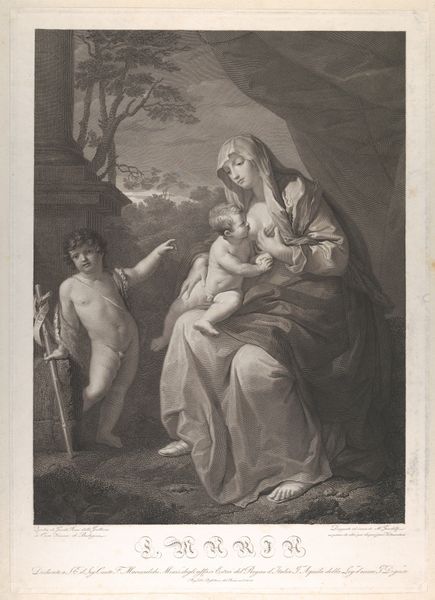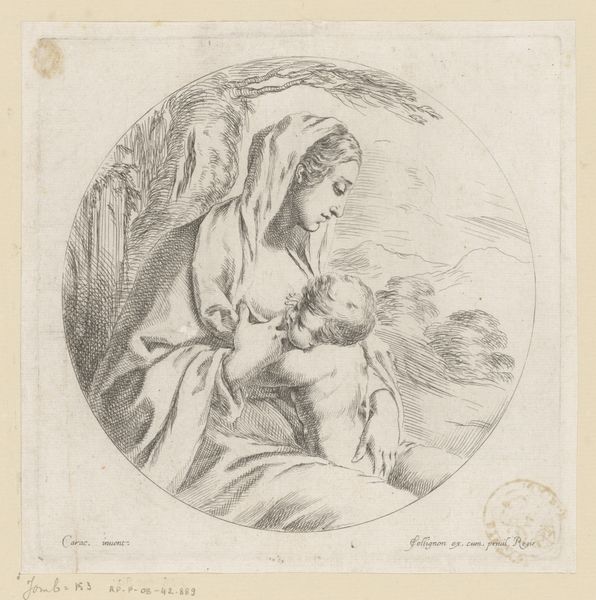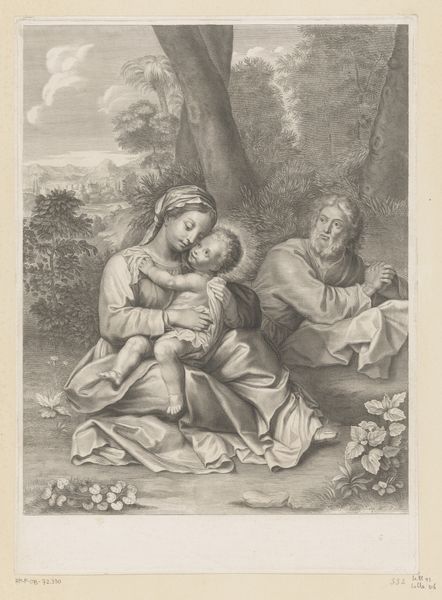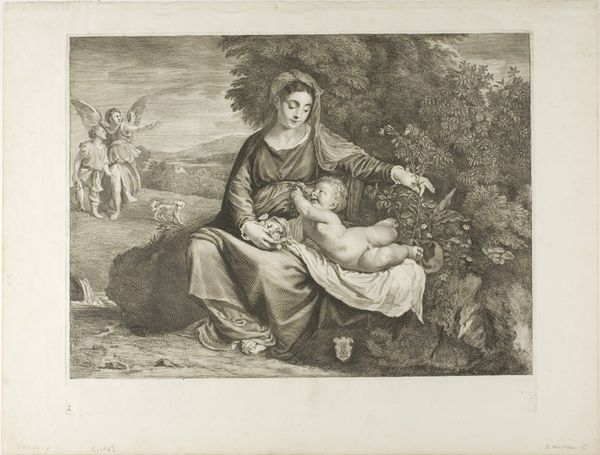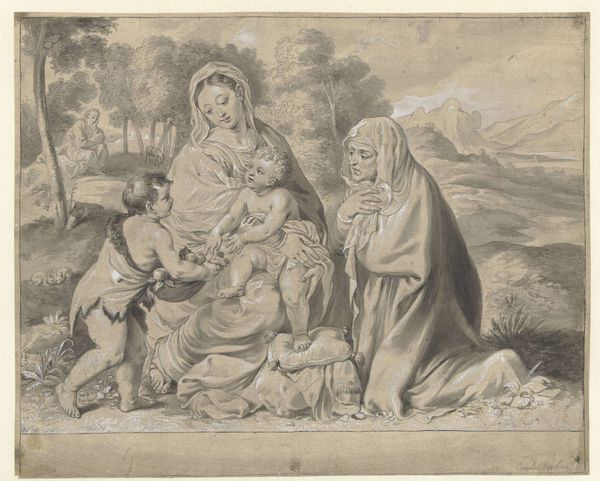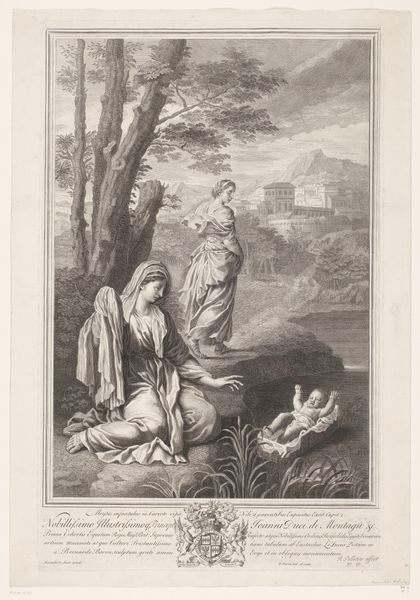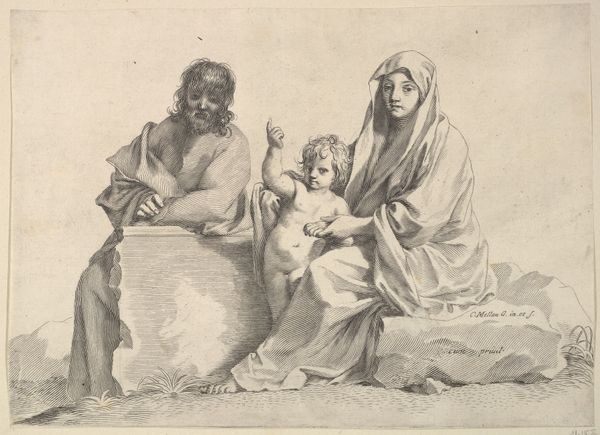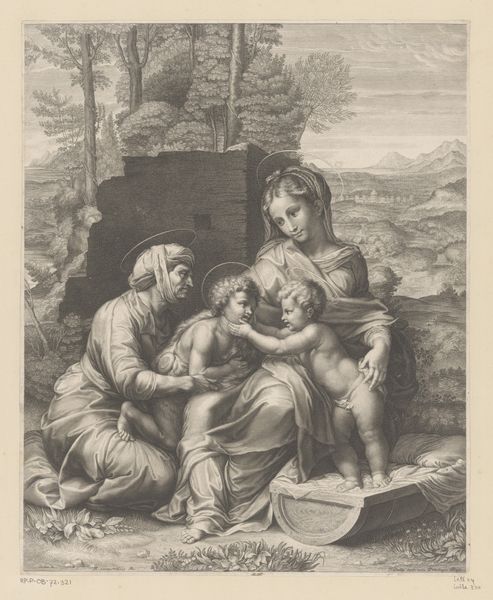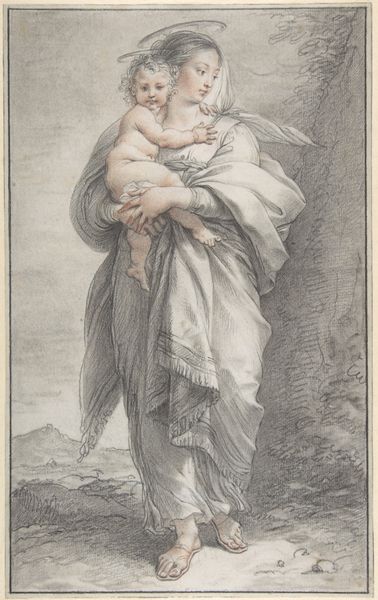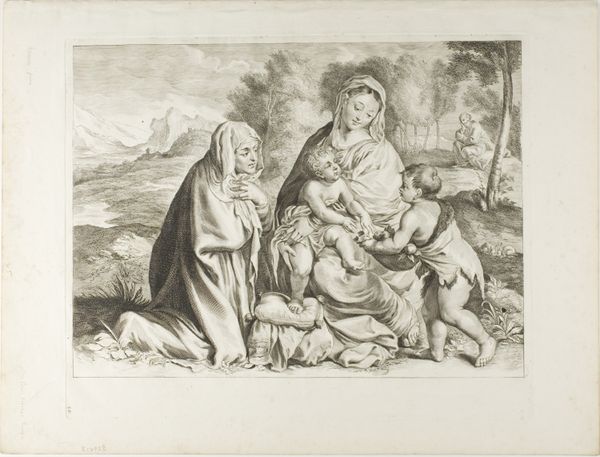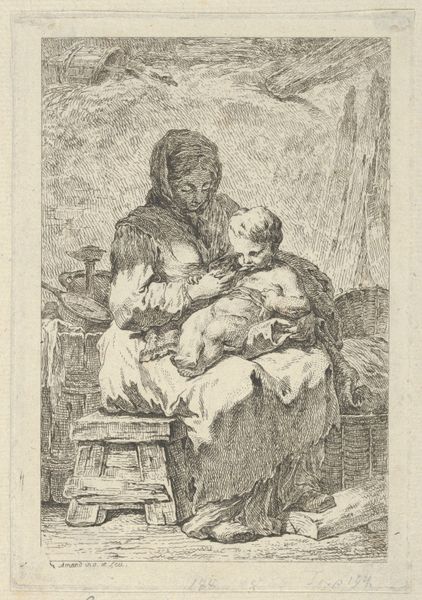
Virgin and Child Seated on a Rock (Vierge à l'Enfant dans des ruines) 1659
0:00
0:00
drawing, print
#
drawing
#
baroque
# print
#
figuration
#
line
#
history-painting
Dimensions: sheet: 12 1/2 x 14 1/2 in. (31.7 x 36.8 cm)
Copyright: Public Domain
Editor: So, here we have Claude Mellan's "Virgin and Child Seated on a Rock," from 1659. It's a print, currently residing at the Met. What strikes me is the contrast between the crispness of the figures and the somewhat chaotic background. How do you interpret this work, focusing on the lines and forms? Curator: The image presents an intriguing formal dichotomy. Observe how Mellan meticulously delineates the figures of the Virgin and Child using precise, unbroken lines, a technique that emphasizes their idealized forms and elevates them against the more loosely defined backdrop of architectural ruins and landscape. What effect does the linear clarity of the subjects, juxtaposed with the textured background, achieve, in your view? Editor: Well, the crispness definitely directs my eye straight to Mary and Jesus. But does the crumbling ruin setting add a sense of transience, of the temporal world in contrast to their eternal nature? Curator: Precisely. The contrast extends beyond mere visual effect, serving to highlight a tension between the enduring nature of the spiritual figures and the decaying remnants of the physical world. Notice how the architecture behind the virgin mirrors this dichotomy with its stark rectangular shapes disrupted by subtle gradations of shade and texture. Mellan creates meaning through form and structure; symbolism stems directly from his linear style. What feelings arise from that contrast? Editor: I guess a sense of hope. Even among ruins, there’s a solid, almost mathematical structure and serenity in the subjects. I never thought line work could carry so much meaning! Curator: Indeed. Mellan’s artistry resides in his ability to weave thematic complexity from a seemingly simple visual vocabulary, creating a formal conversation between permanence and impermanence, hope and decay, and solidity and ephemerality. An understanding of the artwork is unveiled by examining this technique.
Comments
No comments
Be the first to comment and join the conversation on the ultimate creative platform.
